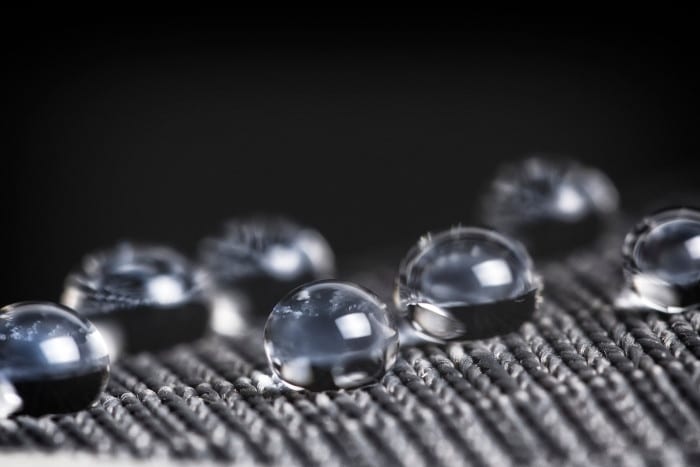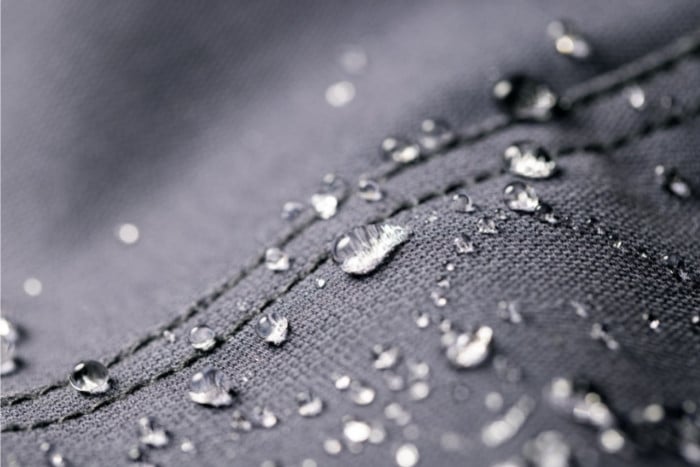Ice fishing tents come in various shapes and sizes, and picking the right one for you is no easy task. If there’s a chance of inclement weather, you’ll probably want to ensure your ice fishing tent will keep you dry.
The waterproofing of an ice fishing tent will vary based on the materials and design of the tent. Most tents are at least water-resistant to keep you dry while still offering breathability. By using a 3rd party waterproofing sealant, you can increase the water-repelling ability of your tent.
Keep reading to learn why ice fishing tents are not 100% waterproof, what to look for to stay dry, and what steps to take to make your tent better in wet weather.
Why Ice Fishing Tents Are Water Resistant, Not Waterproof?
For the most part, ice fishing tents are made with water-resistant nylon, polyester, or other light fabric.
The following points are why this is the case and the positives of using a water-resistant fabric rather than a fully waterproof one.
1. Water Resistant Vs. Waterproof
While you might think these two words are interchangeable, there are a few key differences. A lot of ice fishing tents might be marketed as waterproof.
However, it is more likely that they are water-resistant instead. Water resistance will do a pretty good job keeping water out, and it is unlikely for water to get through in light rain.
Waterproof, however, will keep water out no matter what and will not leak even under torrential downpours.
At first glance, you might think you need to find a waterproof tent, but water resistance will provide you with enough cover for practical use.
Taking the precautionary steps outlined below will also help keep the water out.

2. Waterproof Materials Offer Limited Breathability
One of the downsides of waterproof fabrics is that they keep water out but keep the warm air in really well.
While this does help with insulation, it also creates a large amount of condensation throughout the tent.
It is the same principle if you have spent the night in a tent or a car and noticed the condensation everywhere.
With people breathing in an enclosed space, the moisture and warmth in our breath will collect against the cool materials of the tent and cause condensation all over.
While the waterproof fabric might keep you dry from the water outside the tent, the condensation inside might get you and your gear uncomfortably damp.
Opening a door or window will help, but you’ll also let in all that cold air.
Water-resistant fabrics offer much more breathability than waterproof fabrics, which can help reduce condensation and make it feel less stuffy in the tent without sacrificing a great deal of insulation.
3. Water Resistant Fabrics Are Lightweight
The modern nylon and polyester materials that tents are made from are relatively lightweight, which can be a huge plus if you drag your gear around by sled.
Lightweight fabrics also make setup and takedown a breeze.
Tents made with waterproof fabrics in the same price range as nylon and polyester tents will either be significantly heavier or cut corners in other areas that make them poor quality.
Lightweight fabrics make an easily accessible and practical option for your ice fishing tent and provide plenty of cover in 99% of situations.
Any good quality ice fishing tent will be suitable while using, setting up, and moving it.
4. Most Companies Will Use A Waterproof Coating
Companies will apply a waterproof coating to help the nylon or polyester fabric repel more water. This coating is usually a spray-on PVC, although other options are also available
This coating is not permanent but does help the water bead off and not penetrate the fabric. The fewer flat areas for snow and water to build up, the better this coating will work.
Any company making a quality product will use high-quality waterproofing and take care in its application to ensure all surface areas are covered to prevent leaks.
However, zippers and seams are usually weak spots where the waterproofing will wear off quickly.
This coating is also prone to wear off with use and exposure to water and UV rays and may need to be reapplied every few years.
Thankfully many products are out there for consumers to easily reapply and keep their tent waterproof for years to come.
How To Make Your Ice Fishing Tent More Water Resistant?
For the best protection from the wet weather, you can take some precautions to stay dry.
Most of these solutions are easy and can be done on a day off, especially during the summer when your ice fishing tent is not getting much use.
Proper maintenance on your tent will extend its longevity and keep it in the best working condition for your ice fishing season.

1. Seal The Seams And Zippers Of Your Ice Fishing Tent
Anywhere the fabric is not one flat piece and instead is two pieces meeting each other is a potential weak point for water to go through. Seams and zippers are where you are most likely to see a leak.
How waterproof the zippers are will depend on the quality of the zipper and the wax you apply.
Silicone wax and beeswax are the two most popular options and offer waterproofing qualities and a lubricant to help the zipper slide smoothly.
Seams are another area that often requires some touch-up to keep waterproof and can be done quickly with a wide variety of products for that purpose. Gear Aid Seam Grip applies easily and dries fast.
For most people, covering these two spots with a bit of extra care will help you keep your tent waterproof in most weather, including rain and melting snow.
2. Make Sure To Choose A Tent With The Right Shape
Standing water can add extra pressure and soak into the fabric. The risk is especially true if the roof or top of the tent is flat and can result from the weather or melting snow building up a puddle.
This pressure may make a tent leak. Tents with pitched roofs that don’t offer a spot for the water to build up will inherently be more waterproof than other designs.
Quickly shedding the water will go a long way in how a tent handles wet weather and can make the difference between a dry trip and a miserable one.
Some tents have more backbone than others, which will greatly assist in keeping the snow and water from piling up.
Make sure to choose an ice fishing tent with sturdy supports that prevent any sagging and flat spots.
3. Plan Around The Weather
Finally, if you are concerned about getting wet while ice fishing, you can plan around the weather.
Choosing days without forecasted precipitation will clearly help with keeping you dry and keep you from stressing your ice fishing tent.
While most tents won’t have any leaks under regular use, bad weather might be a problem, and the best way not to have issues is to avoid rain or snow altogether.
This decision might be good if you have the time to do so and are worried about a tent failure.
Conclusion
While the difference between waterproof and water-resistant can be a bit pedantic in some cases, it’s a good idea to understand the difference and how that might affect your trip on the ice.
While most ice fishing tents advertise as being waterproof, most of the time, they are instead water-resistant, which means that they’ll do a good job keeping water out in most cases, but not always.
High-quality tents will offer more waterproof materials than lower-quality tents, so you’ll need to decide based on your particular use.
